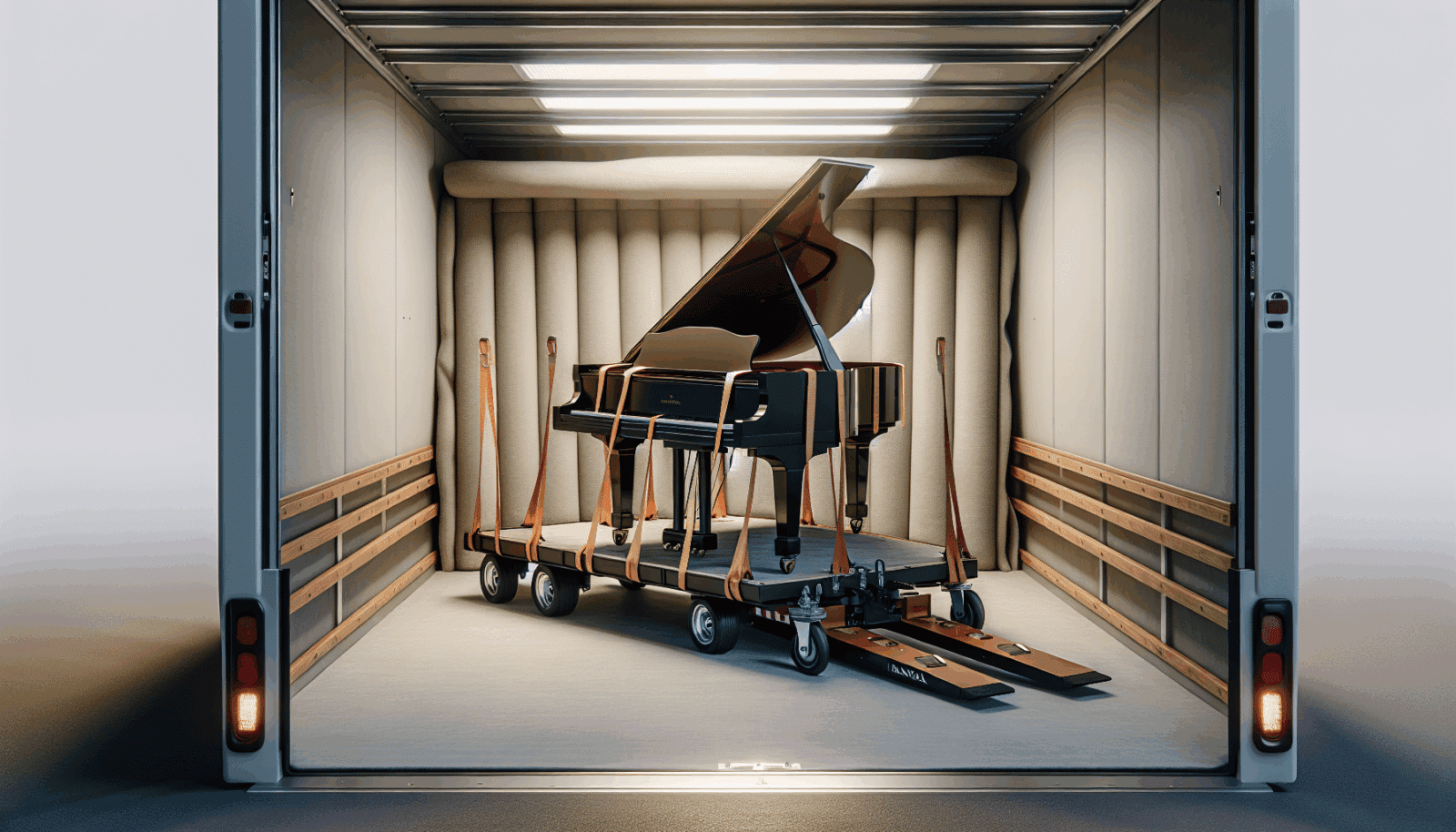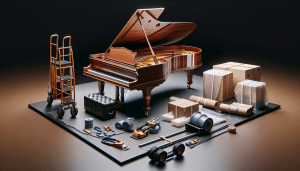At Utah Piano Movers, we know that transporting a piano can feel like a Herculean task. The sheer size, weight, and delicate nature of pianos make them tricky to move without proper techniques. But don’t worry! In this article, we’ll guide homeowners through the dos and don’ts of safe piano transportation, ensuring your beloved instrument arrives at its new home unscathed.
Contents
Understanding the Basics of Piano Moving
Moving a piano isn’t just about lifting and shifting. First off, you need to appreciate the complexity of this magnificent instrument. Whether it’s an upright or a Grand Piano, each has unique characteristics that require special attention. Understanding these basics is the foundation for a successful move.
Pianos are not only heavy but also inherently awkward in shape. While their robust structure can withstand years of playing, they are sensitive to movement. Improper handling can lead to internal damage, affecting sound quality. This section aims to cover the essential knowledge every homeowner needs before diving into the moving process.
Gather Your Materials
Before you even think about lifting that piano, gather all the necessary materials. Having the right tools and equipment can make the difference between a smooth move and a disastrous one.
Tools You’ll Need:
- Piano Dolly: Specially designed to handle the weight and dimensions of a piano, making movement easier.
- Moving Blankets: Protect your piano from scratches and dents during the move.
- Straps and Buckles: Necessary for securing the piano to the dolly and in the moving vehicle.
- Hand Tools: Tools like screwdrivers and pliers for removing any detachable parts, such as legs or pedals.
- Ramp: Ensures safe and smooth loading and unloading onto a moving truck.
Measure Doorways and Hallways
Maneuvering a piano through the narrow confines of your home can be a tricky affair. Therefore, it’s crucial to measure all potential obstacles beforehand. This saves time and helps you plan the best route.
Start by measuring your piano, noting its height, width, and depth. Then, measure all doorways, hallways, and staircases that the piano must navigate. Planning a route in advance avoids any last-minute panic and ensures a smoother transition.
Disassemble What You Can
Taking apart your piano as much as possible can significantly ease the moving process. This step might seem daunting, but it’s simpler than you think. Not only does this make the piano lighter, but it also minimizes the risk of damage.
Begin by removing the music stand and pedals, if detachable. Next, for grand pianos, carefully detach the legs and lid. Remember to keep all screws and small parts in labeled bags to avoid losing them. These small steps can make a big difference in the ease of your move.
Secure the Piano Properly
Whether you’re moving the piano across the room or across town, securing it is vital. Improperly fastened pianos can suffer damage during transit, leading to costly repairs.
Use moving blankets to wrap the piano, securing them with straps and buckles. Ensure the piano is held firmly in place but avoid overtightening, which can cause its own set of problems. Once wrapped, double-check to make sure all parts are well-protected.
Executing the Move
Now comes the part where you’ll actually move the piano. This step requires both strength and finesse. Gather a team of strong movers, whether they’re friends or professionals, to assist in this crucial step.
Using your piano dolly, lift the piano carefully and position it on the dolly. Gently roll the dolly along your pre-measured route, making sure to keep the movement slow and controlled. Always communicate with your team, ensuring everyone is on the same page.
Loading Into the Vehicle
Loading a piano into a moving vehicle is another critical part of the process. This task often requires the use of a ramp. Position the ramp securely and ensure it’s stable before proceeding.
Slowly roll the piano up the ramp, maintaining a steady pace. Once inside the vehicle, strap down the piano to prevent any movement during transit. If possible, use additional padding to further protect your precious cargo. Double-check all straps to ensure they’re secure.
Unloading at the Destination
When you reach your destination, the unloading process should be carried out with the same care and precision as loading. Secure the ramp and double-check its stability before moving the piano down it.
Gradually roll the piano down the ramp, maintaining control at all times. Once it’s safely on the ground, navigate it through the new space, following the same measured route principles you used for your home.
Reassembly and Tuning
Once your piano is in its new spot, it’s time for reassembly and tuning. Start by reattaching any parts you previously removed, such as legs and pedals. Once everything is secure, a professional tuning is highly recommended to restore its optimal sound quality.
Pianos often go out of tune after a move due to changes in environment and physical handling. Having a professional tuner can ensure your piano sounds its best and highlight any potential issues that need addressing.
Why Choose Utah Piano Movers
We understand that moving a piano is a monumental task. That’s why it’s often best to leave it to the experts. At Utah Piano Movers, our team is fully equipped and experienced to handle any type of piano move. We offer top-notch Services that guarantee the safety and security of your instrument.
Our mission is to make your move stress-free while ensuring your piano remains in pristine condition. With our specialized equipment and trained professionals, you can trust us with your prized possession.
Still not sure how to move your piano safely? Give Utah Piano Movers a call at 801-396-7323 or Request a Free Quote today!




